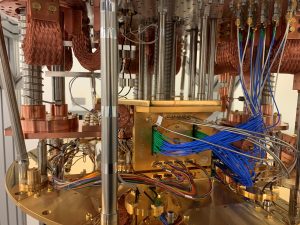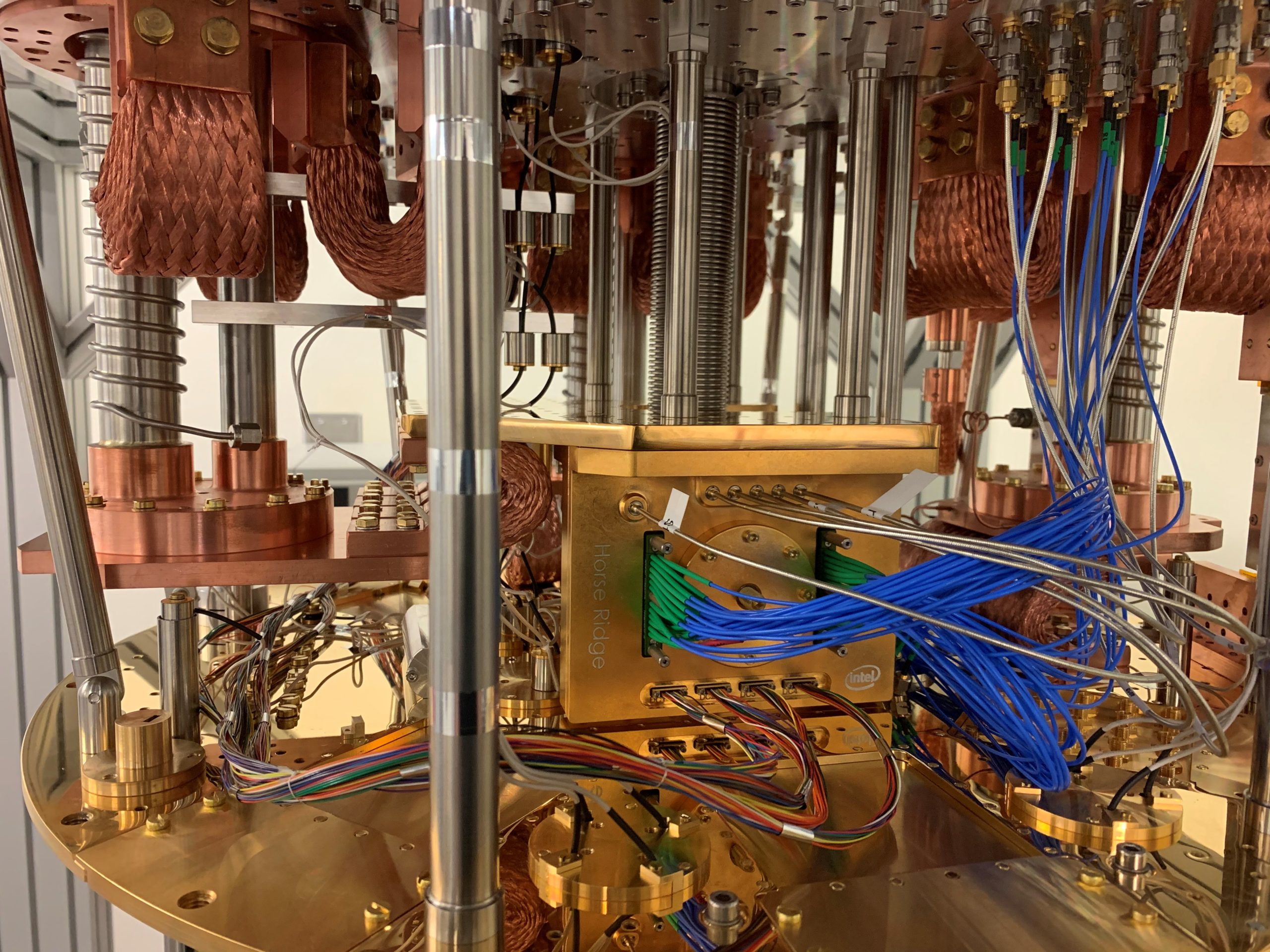
A research team led by Intel and Qutech scientists demonstrated high-fidelity two-qubit control with a qubit control processor. The team, which reported their findings in a research paper published in Nature Machine Intelligence, used Horse Ridge, Intel’s cryogenic qubit control processor.
They report that the results address a critical challenge in the scalability of quantum interconnects — the “interconnect bottleneck.” This bottleneck appears between the quantum chip in a dilution refrigerator and the room-temperature electronics controlling the quantum chip. The team adds that if those electronics can be designed to operate at high fidelity at cryogenic temperatures, they can ultimately be integrated with the qubits on the same die or package, overcoming the ‘wiring bottleneck.’
According to the researchers: “We demonstrate the capabilities of the control chip by programming a number of benchmarking protocols, as well as the Deutsch–Josza algorithm, on a two-qubit quantum processor. These results open up the way towards a fully integrated, scalable silicon-based quantum computer.”
The study offers two critical achievements, according to the researchers. First, an industry standard randomized benchmarking test in the quantum field has been used for the first time, which demonstrates that the Horse Ridge cryogenic control chip achieves the same fidelity as commercial room temperature electronics when controlling a two-qubit processor. The use of randomized benchmarking may mean that Horse Ridge can achieve qubit operations of 99.99 percent fidelity.

Also, the Intel-Qutech researchers said they showed the programmability of the controller using a two-qubit algorithm called the Deutsch–Jozsa algorithm, a simple algorithm that is much more efficient on a quantum computer than a traditional computer. Overall, the results indicate Horse Ridge can control multiple qubits on a single radio frequency line – also known as frequency multiplexing.
“Both these advances indicate that it may be possible to fully integrate the controller chip and the qubits on the same die (as they are all fabricated in silicon) or package, thus further relieving the wiring bottleneck and solving a major roadblock on the path toward quantum scalability,” the team reported.
The research team includes: Xiao Xue, Bishnu Patra, Jeroen P. G. van Dijk, Nodar Samkharadze, Sushil Subramanian, Andrea Corna, Brian Paquelet Wuetz, Charles Jeon, Farhana Sheikh, Esdras Juarez-Hernandez, Brando Perez Esparza, Huzaifa Rampurawala, Brent Carlton, Surej Ravikumar, Carlos Nieva, Sungwon Kim, Hyung-Jin Lee, Amir Sammak, Giordano Scappucci, Menno Veldhorst, Fabio Sebastiano, Masoud Babaie, Stefano Pellerano, Edoardo Charbon and Lieven M. K. Vandersypen.
For more market insights, check out our latest quantum computing news here.
















